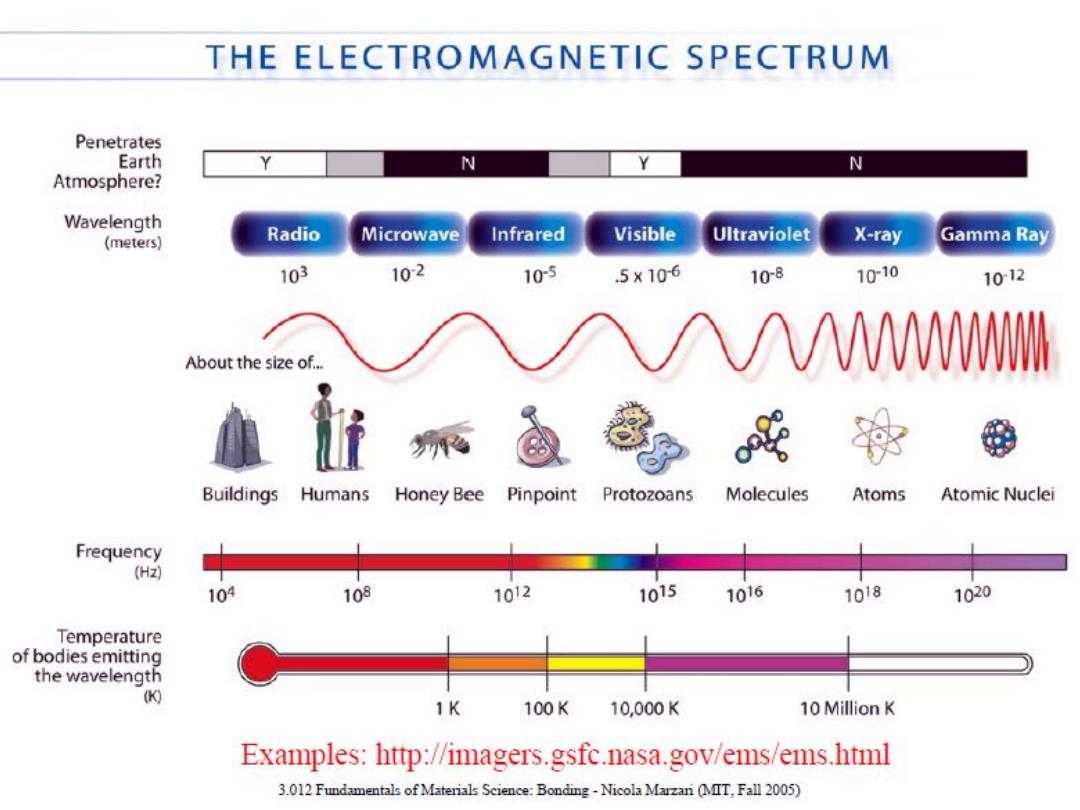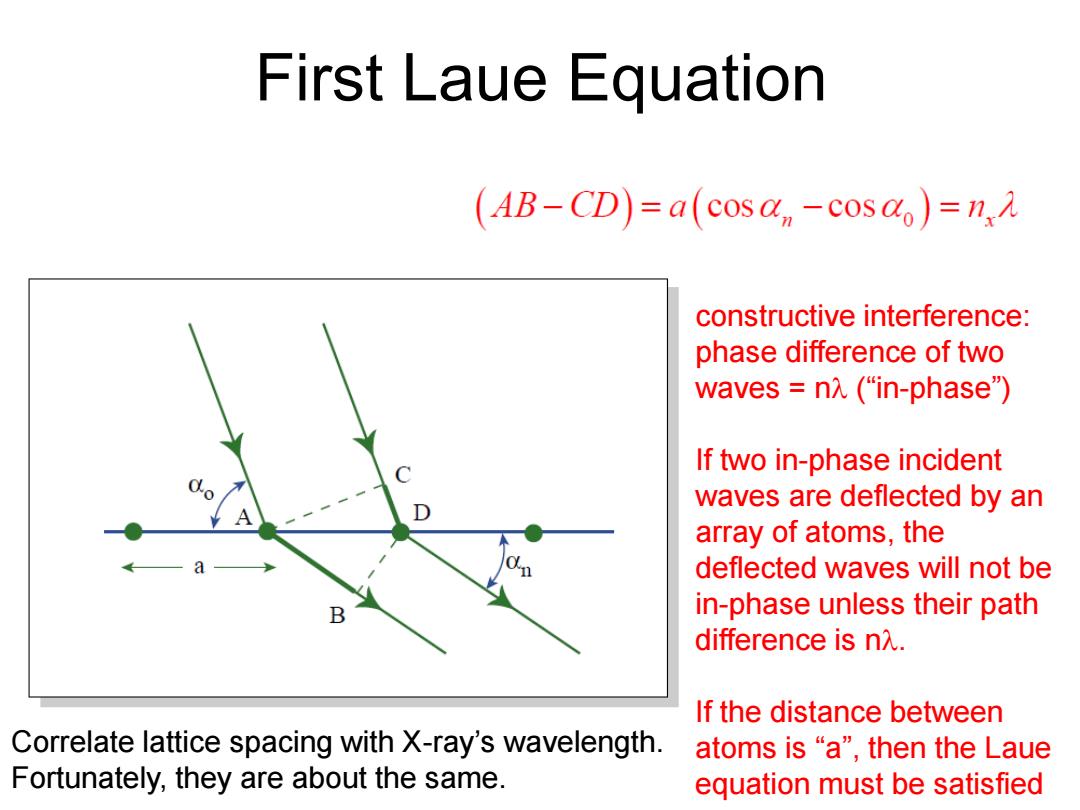
THE ELECTROMAGNETIC SPECTRUM Penetrates Earth N N Atmosphere? Wavelength (meters) Radio Microwave Infrared Visible Ultraviolet X-ray Gamma Ray 103 10-2 105 ,5×106 108 1010 1012 About the size of... A∧WMM Buildings Humans Honey Bee Pinpoint Protozoans Molecules Atoms Atomic Nuclei Frequency (Hz) 104 108 1012 1015 1016 1018 1020 Temperature of bodies emitting the wavelength 0 1K 100K 10,000K 10 Million K Examples:http://imagers.gsfc.nasa.gov/ems/ems.html 3.012 Fundamentals of Materials Science:Bonding-Nicola Marzari (MIT,Fall 2005)

First Laue Equation (AB-CD)=a(cosa,-cosdo)=n, constructive interference: phase difference of two waves n("in-phase") If two in-phase incident waves are deflected by an array of atoms,the deflected waves will not be B in-phase unless their path difference is nA. If the distance between Correlate lattice spacing with X-ray's wavelength. atoms is“a”,then the Laue Fortunately,they are about the same. equation must be satisfied
First Laue Equation constructive interference: phase difference of two waves = nλ (“in-phase”) If two in-phase incident waves are deflected by an array of atoms, the deflected waves will not be in-phase unless their path difference is nλ. If the distance between atoms is “a”, then the Laue equation must be satisfied Correlate lattice spacing with X-ray’s wavelength. Fortunately, they are about the same

First Laue Equation (vector form) a.S=acosa, a,S。=acos a(cosa,-cosa)=a(S-S)=n,2 a aS Scattering vector s=S-So Figure by MIT OCW
First Laue Equation (vector form) Scattering vector s=S-S0

Second Laue Equation b(cos B,-cosBo)=b.(S-S.)=n, s Diffracted Rays ●S0 Incident Ray
Second Laue Equation

Third Laue Equation a(cOS-cosa)=a.(S-S,)=n,元 b(Cos B-cosf)=b(S-S。)=2, c(cosyn-cosY。)=c.(S-S,)=n
Third Laue Equation